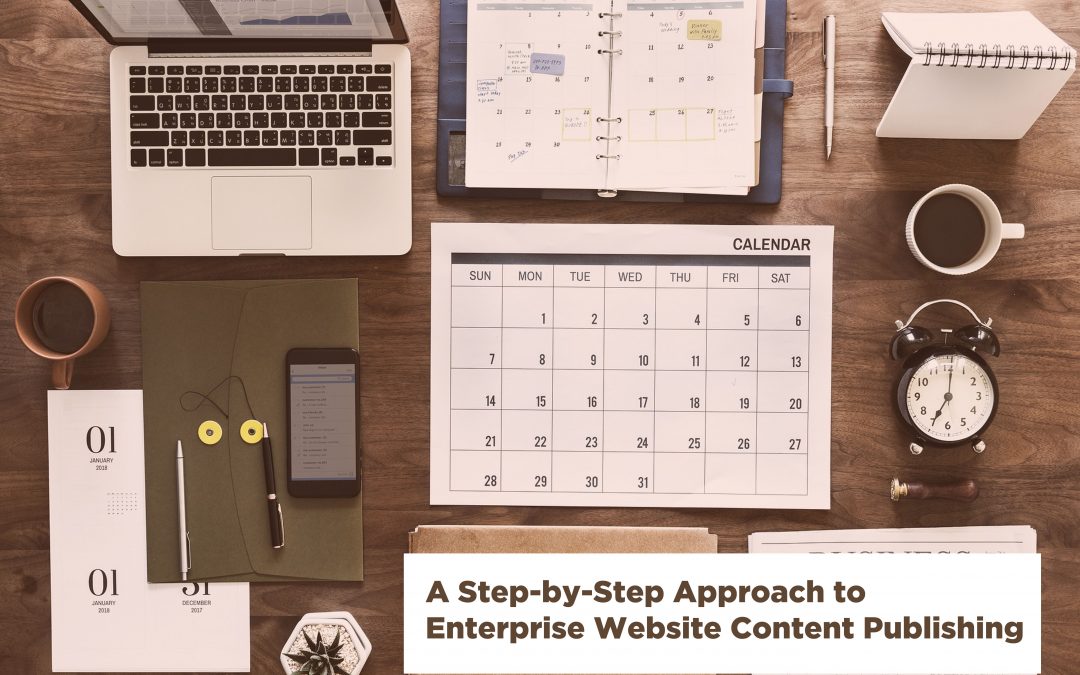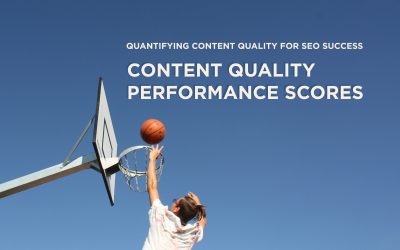At iQuanti, we work with many large enterprises whose websites have strong domain authority. Thanks to their thousands of inbound links and well-recognized brand names, these sites are in a good position to rank on search engine results pages (SERPs).
Yet, at the same time, many of our enterprise customers have room for improvement in SEO. Their bottom-funnel content is generally strong, as you’d expect from brands that have digital acquisition as a KPI. What’s missing is content for the early stages of the purchase journey.
Here, we walk through the six-step process we apply to client engagements for publishing winning content across the customer journey.
Identifying Content Gaps
Identifying gaps in your enterprise content strategy is a critical first step. Content gap analysis helps you increase the relevance of your current content while developing a plan to meet customer needs you’re not currently serving.
Search, as an instrumental tool in the customer buyer journey, is where you want to turn to determine where your content gaps exist. Specifically, you want to look at how your pages rank in searches that your prospects conduct on the path to purchase.
This requires insight into the keyword landscape for your customer journey. There will be primary, secondary and tertiary themes that your customers are searching; your content should map to these themes.
Pages that appear outside the top few rank positions for your target keywords indicate gaps in how well your content matches searcher intent.
Planning Content Strategy
The next step is to develop a content strategy for which pages take optimization priority. Gap analysis helps identify how much content you’ll need to add, expand or remove.
There are typically two workstreams in the content planning phase: developing new assets or pages and strengthening existing pages. Any page that’s not ranking in a top position for your target keywords is a candidate for getting reworked.
Key to the planning step is calendarizing your content creation. You should have an idea of the content-production resources you have available, such that you can develop project plans for editing existing assets or creating new ones.
To ensure you’re making the right edits to your pages, you may want to investigate what elements are shared by top-ranked pages. Do they have especially strong backlink profiles? Do they have particularly high domain authority? Here, we use our proprietary enterprise SEO tool, ALPS to look for key relevancy signals, opportunities to improve and establish a baseline for page performance.
Developing New Content
In the content-development phase, detailed content briefs need to be created to ensure content creators are aligned with technical and on-page best practices.
When crafting content for the web, keyword density is less important than content relevancy and quality. Keywords still matter, of course – but Google focuses more on assessing how comprehensively a theme is covered across a site than on counting keywords.
In addition to catering to relevant themes and subthemes, content should follow quality guidelines around header tags and meta descriptions. URL hierarchies are also essential. Once you have identified the themes and subthemes you want to address, you should map a URL structure that clearly communicates how pages relate to each other.
Predicting Content Performance
As in the planning stage, we again use ALPS for prediction purposes. In this phase of content development, we model how new or edited content will rank for a given keyword or key phrase.
ALPS reverse-engineers the Google algorithm to estimate how content will perform before it goes live. This adds an element of certainty to content planning, helping us make faster, more impactful content changes for our clients.
If you don’t have access to ALPS, other methodologies do allow for a modicum of prediction. Ahrefs and SEMRush allow brands to estimate search traffic for key terms in their enterprise content strategy. And you can simply browse the competitive landscape for your target keywords and attempt to mirror their relevancy signals.
Content Publishing: New or Edited Pages
For some brands, publishing a blog post is as simple as uploading it to WordPress and hitting the “Publish” button. For large brands, though, this final production phase can be the most time-consuming component of enterprise content publishing.
Often, a single asset must run through a brand’s legal, UX and design teams. At each stage, roadblocks may be introduced that can require the process to start all over.
This is why we lean heavily on ALPS early in content publishing – in the content creation stage. Modeling content performance before it goes live limits the number of edits required. That greatly speeds the asset’s entry into production – so it can contribute to delivering a higher search ranking, align closely with brand requirements and lead to more traffic for the brand.
Auditing Content After Go-Live
Essential in the audit phase is looking at how well content assets score for relevancy after they go live. Do new assets rank as expected? If not, why? Ask these questions to identify where tweaks may be needed.
By following a comprehensive enterprise content publishing process and leveraging ALPS’ predictive capabilities, we leave minimal room for error in content creation. Yet as new Google algorithm updates are rolled out, if you observe your content is underperforming against expectations, changes may be needed.
A quarterly or biannual enterprise content audit is imperative to ensure your site is aligned with not only algorithmic changes but any brand or marketing campaigns the business may be undertaking.
In addition, your SEO team should stay on top of sudden, drastic changes in rankings for your key pages. These may indicate a change in the algorithm – or new strategies by your competitors.
The Final Word
Ultimately, content shouldn’t exist for its own sake: it should support the journey consumers take through your product portfolio. By building content against this goal, you not only enhance SEO but support all of your other acquisition activities.
Read more about iQuanti’s Enterprise Content Marketing services here.




